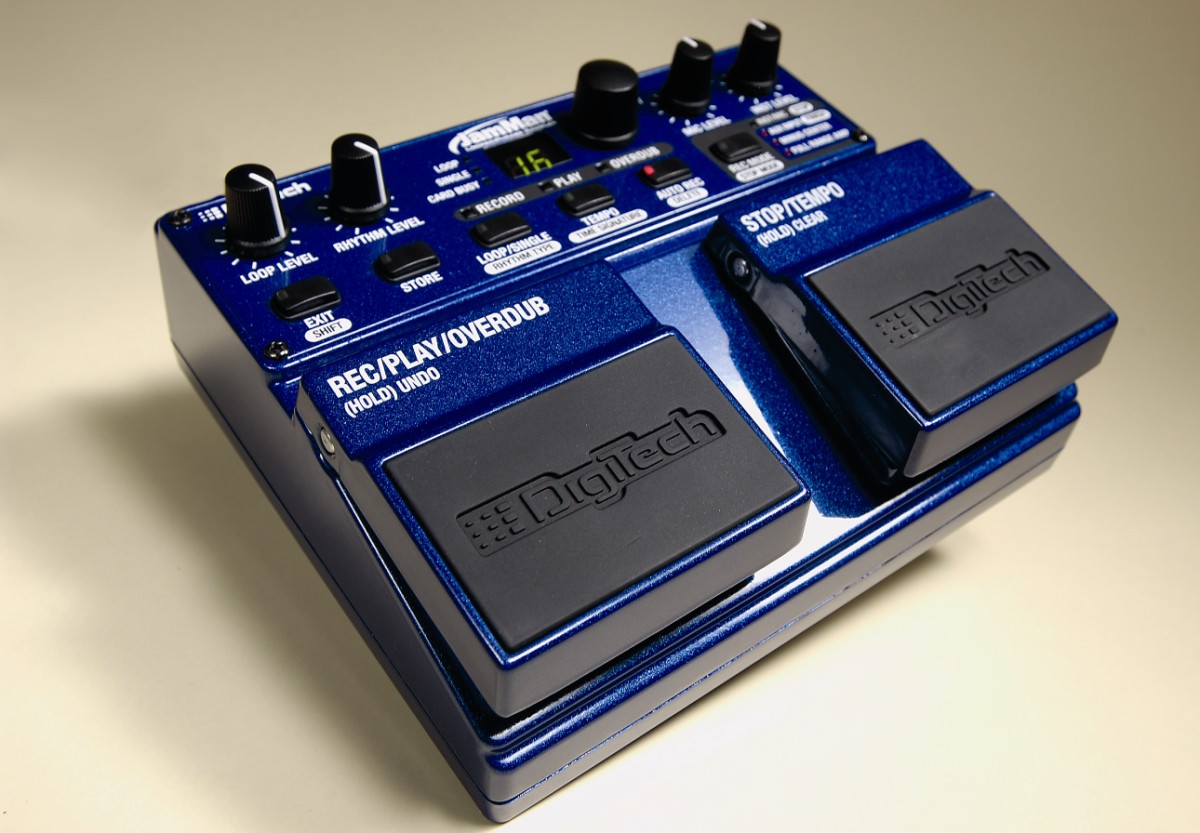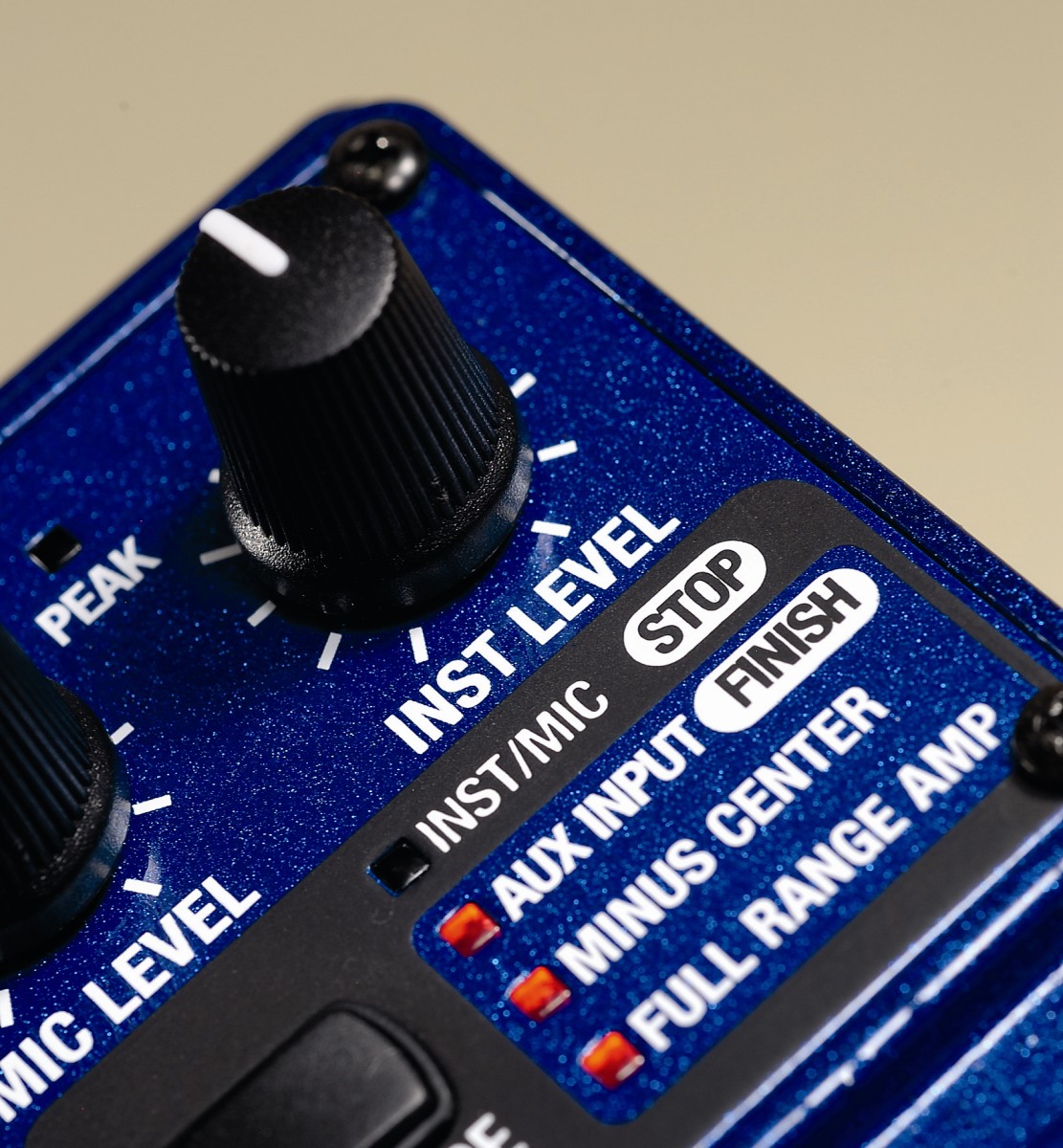MusicRadar Verdict
Aside from the minor differences between them, the JamMan and the BOSS RC-20XL essentially do the same thing, although the Compact Flash memory here provides more recording space even with the supplied card. The six-hour-plus memory available with a 2GB card turns the JamMan into a very serious piece of kit. So aside from the JamMan´s lack of a reverse function, there´s little reason to consider the RC-20XL over the JamMan. It´s £30 more expensive but that´s absorbed by the fact that a power supply is included - neither system accounts for additional footswitches - so price really isn´t an issue. As mentioned, not configuring the outputs to allow use with a multi-amp/ PA set-up seems a missed opportunity; this writer would much rather see that facility over the relatively limited phrase recorder facility that is totally outclassed by something like Tascam´s standalone CD Trainer. As it stands, you´ll get the best from the JamMan´s facilities by placing it last in your FX loop, setting your amp clean and using stompboxes for drive sounds. For now, at least, the JamMan is state-of-the-art. Whether you want to use it to create new parts or harmony lines, to voice entire backing tracks, or even to simply practise, the JamMan is extremely powerful and could certainly change the way many of us approach our performance.
Pros
- +
Most powerful stompbox looper available .
Cons
- -
Additional expense of footpedal. No reverse function.
MusicRadar's got your back


It's doubtful that DigiTech can be accused of industrial espionage, but there's little doubt that this latest JamMan pedal is based directly on Boss's Twin Pedal format. When it was launched, it seemed specifically intended to outclass Boss's RC-20XL Phrase Recorder.
Outwardly it seems an almost blatant copy, with its dual width pedal size, main controls and central display in the top section and two large rubber-topped footswitches below. Despite many similarities, the major difference is one of memory. Boss's RC-20XL is limited to its own 'hard-disk' - once it's full that's it and you can't offload the info. DigiTech includes - for the first time in a stompbox, when it launched - 'removable media' in the form of a Compact Flash (Type I) card. Digital camera enthusiasts will be more than familiar with these and other types of removable memory card: your photos are stored on the card, not the camera, and it's the card size that dictates the number of shots you can take. In our context, the supplied 128MB card allows 24 minutes of recording; with a 2GB card you could hold over six hours worth of loops. Not only that, but via the USB port you can download your loops to your computer (as .wav files) and reformat and reuse the CF card as many times as you want.
Obviously, you can upload the stored files from your computer back to the JamMan when, and if, you need. All this makes the RC-20XL's 16 minutes of memory with no computer connectivity seem a little archaic, not least because of the JamMan's slightly higher spec audio quality. Similarly, the JamMan's 99 memory slots look very impressive next to the RC-20XL's 11. Aside from this admittedly huge difference, the JamMan - with a couple of omissions - pretty much mirrors the RC-20XL in terms of features.
We have dual inputs for guitar (6.4mm jack) and microphone (XLR) plus mini-jack auxiliary input to create loops from pre-recorded sources. There are rotary level controls for both mic and instrument, and levels for loop output and the rhythm 'click' track. Here we get a choice of nine types plus off - from wood blocks to various kick/high-hats combos - and time signature can be set (from two to 15 beats per measure). The tap tempo feature is a little frustrating. You can only alter the tempo of a loop while it's playing -handy if you're playing with a live drummer - from the tempo push button, not the right-hand footswitch which will only alter tempo pre- or post-recording. Annoyingly, there's no tempo readout on the small LED display so setting precise tempo isn't as easy as it could be.
There are four recording modes (inst/ mic, aux input, minus centre, and full range amp) that cover standard loop recording as well as using the JamMan as a practice phrase recorder via the centre-cancel function. And bearing in mind you might want to run full backing tracks through your guitar amp, the 'full range amp' setting is EQ'd to maximise the limited frequency response of your guitar amp.
Sounds
We'd wager the JamMan is a little more intuitive in use than the RC-20XL, but that may be simply due to a similar format being developed further. Loop recording, playback and overdubbing are straightforward, as are the undo functions and storing. Like the RC-20XL, you can't do immediate 'sound-on-sound' or live looping - you have to record a loop first, play it, then overdub - as you can with something like Line 6's DM4 looper.
It's a feature that some will miss. We also don't have the RC-20XL's reverse function, again a favourite if you need to create some otherworldly loops and textures. Although not mentioned in the manual, DigiTech tells us that there is auto-quantise within the JamMan, although we found its effect to be subtle and the key to successful loops remains ultra tight playing, and starting and stopping the loop record on-beat.
The massive memory also brings questions about the JamMan concept, which can be aimed at the RC20XL too, concerning output destination. Even the most creative musician would be hard-pushed to fill this much memory with loops to be outputted through a guitar amp. Assuming that you might want to use a dual amp set-up, so your loop is played through one amp while you take a solo through another, you have no way of configuring the JamMan to do this.
Also full range loops, and maybe entire backing tacks, really need to go through the PA and not your guitar amp. Surely the ability to provide and configure different outputs - while still allowing your live guitar output to go to your main amp - should be a part of the next generation loopers. Unlike the RC-20XL, we don't get a CD of pre-recorded loops, and specific .wav file editing software would be nice too.
It would be great to be able to edit and tweak your loops - even basic things like output level and volume fade in/fade out - either after you've recorded, as in the case of your self-inputted guitar loops, or before you upload them for backing parts/tracks etc. Sure, there's plenty of simple software available to do this but an all-in-one package is always preferable.
MusicRadar is the number 1 website for music makers of all kinds, be they guitarists, drummers, keyboard players, djs or producers...
GEAR: We help musicians find the best gear with top-ranking gear round-ups and high- quality, authoritative reviews by a wide team of highly experienced experts.
TIPS: We also provide tuition, from bite-sized tips to advanced work-outs and guidance from recognised musicians and stars.
STARS: We talk to musicians and stars about their creative processes, and the nuts and bolts of their gear and technique. We give fans an insight into the actual craft of music making that no other music website can.
“I used everything I knew about music”: How Green Day exceeded expectations with their most ambitious song
YouTube just added AI tools that makes musicians, library music and video editors redundant
“Every one of them said yes without hesitation": Hank Marvin and Roger Taylor have just remade a '60s classic for charity










